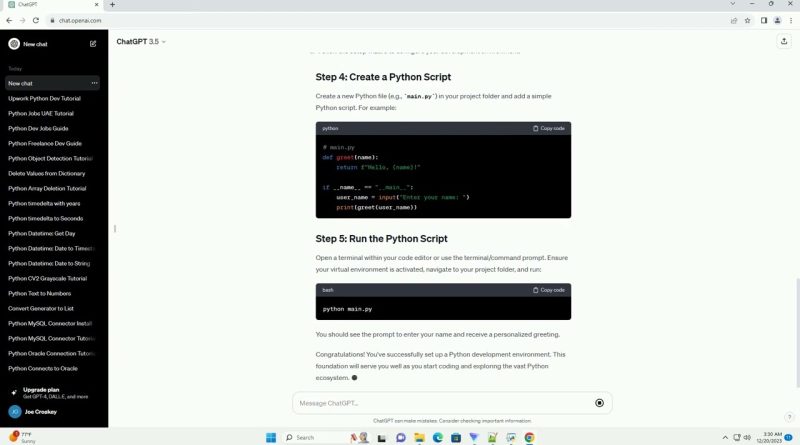python development environment setup
Download this code from https://codegive.com
In this tutorial, we will guide you through setting up a Python development environment on your machine. A well-configured environment is crucial for efficient coding and testing. We’ll cover the installation of Python, setting up a virtual environment, and configuring a code editor for Python development.
The first step is to install Python on your machine. Visit the official Python website and download the latest version for your operating system. Follow the installation instructions provided.
Note: During installation, make sure to check the box that says “Add Python to PATH” to simplify command-line usage.
After the installation is complete, open a terminal or command prompt and verify the Python installation by running:
This should display the installed Python version.
A virtual environment allows you to create isolated Python environments for your projects, preventing conflicts between dependencies. Navigate to your project folder in the terminal and run the following commands:
Activate the virtual environment:
On Windows:
On macOS/Linux:
You should see the virtual environment name in the terminal prompt, indicating that it’s active.
Choose a code editor that suits your preferences. Two popular choices are Visual Studio Code (VSCode) and PyCharm.
Create a new Python file (e.g., main.py) in your project folder and add a simple Python script. For example:
Open a terminal within your code editor or use the terminal/command prompt. Ensure your virtual environment is activated, navigate to your project folder, and run:
You should see the prompt to enter your name and receive a personalized greeting.
Congratulations! You’ve successfully set up a Python development environment. This foundation will serve you well as you start coding and exploring the vast Python ecosystem.
ChatGPT
by CodeCreate
linux foundation



